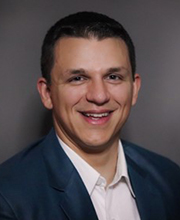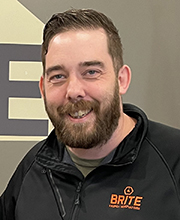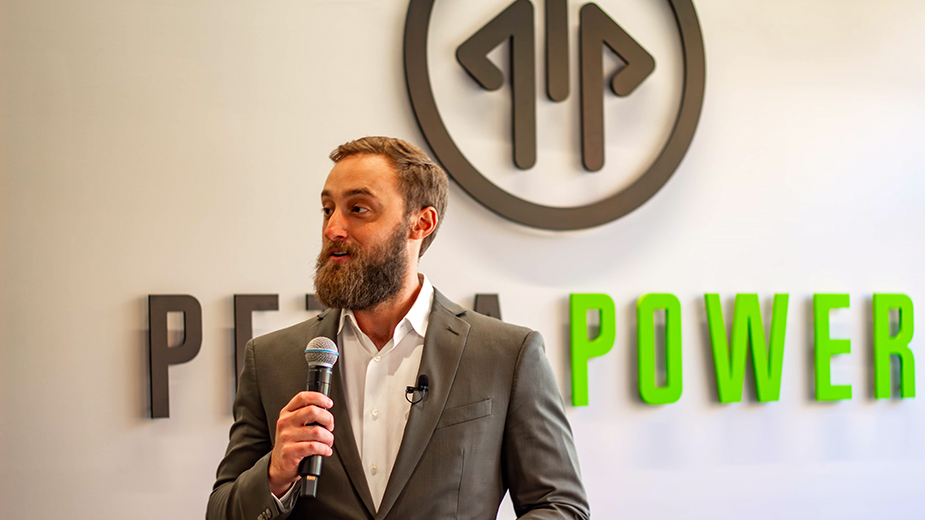YOUNGSTOWN, Ohio – From homes to businesses and transportation to recreation, some of the many innovations in energy technology are being advanced in the Mahoning Valley.
“We’re focused on vehicle electrification, energy storage, grid resiliency, because those are the markets that are being disrupted and having growth right now,” says Rick Stockburger, president and CEO of Brite Energy Innovators in Warren, which supports energy startups.
Innovators use the space at Brite to test batteries used to store the energy produced in an ever-increasing variety of ways. The object is to learn how fast the batteries degrade and what additives make them last longer both in the heat and the cold.
Aaron Goodman, CEO of Petra Power, says his company survived the vital early stages, expanded its team and is ready to operate on a larger scale.
Petra Power chose Brite because while other incubators focus on startups that do not require a lot of resources, Brite supports companies that make things, need raw materials and space.
In its early stages, Petra Power used space at the incubator but recently jumped to Solon in search of more space.
Petra Power creates solid oxide fuel cells, which can be powered by diesel fuel to create electricity without burning fuel. But once hydrogen becomes more cost-efficient and cleaner to produce, the solid oxide fuel cell can be powered by it as well, Goodman says.
The solid oxide fuel cells promise an opportunity to create much cleaner and more efficient power than combustion engines. Current applications include emergency and backup power. Transportation, shipping and home power markets are next, he says.
“We see solid oxide fuel cells as being a link between the traditional fossil fuel-based energy economy that exists around the globe – and isn’t going anywhere anytime soon – and the clean hydrogen-based economy that many states and countries are building toward in the future,” Goodman says.
Last year, the hydrogen market was $154 billion, he notes. Hydrogen currently is used in certain industrial processes such as fuel refinement. This entails using gray hydrogen, which still releases greenhouse gases and does not provide significant economic or environmental benefits.
Installing a solid oxide fuel cell now can lower the cost barriers for someone anticipating a switch to hydrogen down the road.
“And in that way, it is very much a two-pronged approach to both reducing emissions today while providing a clearer and less arduous pathway to clean energy in the future,” Goodman says.
FUELING INNOVATION
Tony Frisone, co-founder and CEO of CZAR-Power, says today “is one of the most wildly exciting times to work in energy.”

The company’s initials, CZAR, stand for carbon zero advanced research. It specializes in reducing the cost and complexity of adopting energy solutions.
Frisone says he sees many energy innovators focused on just their piece of the pie – how to make their energy work better, more reliably and cheaper. But they are not communicating or working together to create a system.
“We think the future is going to consist to some degree on onsite energy generation, energy storage and electrification of transportation,” says Frisone. “How do we build a system that unifies all these siloed pieces into a single device, a streamlined system?”
Frisone draws an analogy to how the smartphone unified the need to carry a flip phone, a camera and a computer for internet access. Energy solutions are ways to improve efficiency and functionality so devices can be used in multiple ways to power vehicles, homes and businesses, he says.
Hydrogen is one of the biggest parts of the clean-energy future. Three Brite member companies were selected in March for $43.8 million in U.S. Department of Energy funding for companies that are part of the U.S. National Clean Hydrogen Strategy.
Two of the Brite projects include the use of the electrolyzer. It is a key component of harnessing hydrogen as a power source, using electricity to split water into hydrogen and oxygen, leaving only water as waste in the process.
Power to Hydrogen, based in Columbus, was awarded $6.6 million, for development and scaling work on advanced electrolysis cell components designed for assembly, which would be applicable to a broad set of alkaline electrolyzer designs and establish a U.S.-based component supply chain.
Another $7.2 million is going to Columbus-based pH Matter LLC, which is working to advance fuel cell supply chain development for use in the heavy-duty transportation market.
The third Brite company, Nexceris, also known as NexTech Materials Ltd., of Lewis Center, Ohio, was awarded $30 million for low-cost, high-throughput electrolyzer manufacturing. Nexceris is developing automated solid oxide electrolyzer stack manufacturing processes to increase throughput and reduce costs.
The ongoing innovative work of these three companies are part of 52 projects across 24 states that shared $750 million in funding.
VOLTAGE VALLEY
The electric vehicle industry continues to grow in the Mahoning Valley despite drawbacks, Brite’s Stockburger says. He says the region is a better place because of what Lordstown Motors has done and what Foxconn is about to do for the industry.

Stockburger likens the evolution of EVs to televisions, noting that when big screen televisions came out in the 1990s, they were expensive, clunky and had poor quality pictures.
“We’re getting to the point with electric vehicles where they’re starting to become affordable for everybody,” Stockburger says. “There is still range anxiety and issues regarding that. But all those issues are technology problems. They’re not product problems. And that’s where I believe there are huge opportunities for innovators and people who are engaging in this space.”
CZAR-Power’s Frisone knows people have concerns about EVs that center on recycling batteries, becoming dependent on cobalt-rich batteries and the sources of the components. Now there are longer-life batteries that use lithium, iron and phosphate instead of cobalt, he says. Lithium can be sourced from Chile, which has the world’s largest reserves, and from Australia, the world’s largest supplier. Additionally, a large supply of lithium recently was found in the western United States.
Stockburger points to another company, Adena Power, that has created a battery with sodium and iron, which means no critical materials need to be sourced outside the United States.
Contemporary Amperex Technology Co. Ltd., a Chinese lithium-ion battery company, recently was able to innovate a battery that reduced the cost from $6,000 to $3,000 and increased the range to 500 miles from 300 miles, according to Stockburger.
The Brite CEO drives a Tesla, which he says has saved him $10,000 in fuel and required no maintenance over the past three years. By charging it every night, Stockburger says he wakes up with 250 miles of range available.
Making sure electric vehicles are ready to handle extreme cold and hot weather and can further extend their range. “There is a tremendous amount of money that will go to the people and organizations who solve these things,” Frisone says,
Adds Stockburger, “The world is still trending in this electric vehicle direction and what’s stopping us is technology, which is achievable and overcomeable.”
Still, the future of vehicles might not be all electric.
Hyperion Motors, founded in Columbus, in 2011 by Angelo Kafantaris, a Warren G. Harding High School graduate, has created a supercharged vehicle that runs on hydrogen propulsion. The company plans to build hydrogen fuel cells for both stationary and mobile uses.
OTHER ENERGY SOLUTIONS
Stockburger and Petra Power’s Goodman cite a very small nuclear modular reactor, a particle accelerator permitted recently in Washington State, as an intriguing energy solution with a shorter permitting process and a much smaller footprint than the large reactors built in the 1960s.
And offshore wind continues to become more economically viable, says Goodman.
“Environment is important to us,” Stockburger says. “Carbon reduction is super important to us as an organization. We care about it deeply. But I don’t think you can reduce carbon if you can’t make a viable business. I think economics is going to solve climate change.”
This energy future includes nuclear, hydrogen, biomass, solar, wind, geothermal and heat pumps, Goodman adds.
“It’s not a one-size-fits-all situation as many people like to think,” he says. “Each little incremental advancement is an important piece of the larger puzzle.”
Pictured at top: Aaron Goodman, CEO of Petra Power, says his company is ready to operate on a larger scale.
